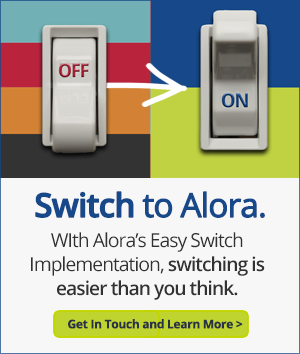
30 Oct Starting Strong from Your First Home Health Visit
Tips and Best Practices for the First 48 Hours with a New Home Health Patient
When a patient first contacts your home health agency, they have a lot of questions and concerns. They may never have had a professional caregiver, and welcoming a stranger into their home can be nerve-wracking. Your job is to put them at ease and establish trust immediately. How you handle your first visit will set the tone for the entirety of their relationship with your agency.
Let’s walk through each step of the start-of-care (SOC) process so that, with each new patient, your agency starts off strong every time.
1. Make a Great First Impression
 Whether you conduct the SOC visit yourself, or your agency sends a representative, the patient wants to know who is coming. Whoever does the intake is usually not the same as the clinician providing care, so if possible, bring a caregiver along, make a friendly introduction, and clearly explain your different roles. But only two people at a time! Don’t bring your whole agency, or you’ll overwhelm the patient with too many people.
Whether you conduct the SOC visit yourself, or your agency sends a representative, the patient wants to know who is coming. Whoever does the intake is usually not the same as the clinician providing care, so if possible, bring a caregiver along, make a friendly introduction, and clearly explain your different roles. But only two people at a time! Don’t bring your whole agency, or you’ll overwhelm the patient with too many people.
Likewise, the key decision maker and the patient receiving care might be two different people. So if the patient has granted medical power of attorney to a family member, you should make sure that person is present in the room or connected virtually by video.
Good manners and small gestures go a long way. So offer to remove your shoes when you enter. Avoid medical jargon, using only plain, respectful language.
The most important thing to remember is to listen. Don’t rush. Give the patient and their family time to express their feelings and concerns. When they feel heard and understood, then their anxiety will drop and they’ll begin to trust your agency.
2. Focus on Assessment
 Assessment is the backbone of effective care and CMS compliance. Incomplete assessments can delay care, impede their insurance reimbursement, or trigger audits. Most of your time during that first visit needs to focus on a thorough assessment of the patient’s condition. Having a good EMR for home health will aid you greatly in this process.
Assessment is the backbone of effective care and CMS compliance. Incomplete assessments can delay care, impede their insurance reimbursement, or trigger audits. Most of your time during that first visit needs to focus on a thorough assessment of the patient’s condition. Having a good EMR for home health will aid you greatly in this process.
Start softly with easy questions about routines and preferences. How does this person typically feed themselves, what do they like to eat, and when? These questions will allow you to create a more personalized plan of care.
Next, evaluate their fine motor skills and cognitive ability. Does this patient have any memory loss, either long- or short-term? Can this patient easily bathe, dress, and feed themself? If there’s any difficulty, then decide whether the caregiver should provide full hands-on support or merely stand by and watch, ready to step in and help as needed.
Review all medications the patient is taking, including the dosage and frequency. This should also include how they get their prescription refills, whether someone picks them up from the pharmacy or they have them delivered to their door.
Take a good look around every room of the patient’s residence, searching for any potential fall risks such as stairs, loose rugs, as well as any walls, doorways, or corners that require sharp turns or might be difficult to maneuver around. Usually, the riskiest place in the home is the bath or shower. Does the patient need to lift their legs up high to step over the tub? Make careful notes about grab bars, sliding doors, shower chairs, safety strips, and treads. If any of these things are missing, then develop a plan to have them installed as soon as possible.
If a patient has a disability or has recently been discharged, they will likely have some kind of equipment in their home, whether it’s a Hoyer lift, oxygen tank, or other device. Be extremely thorough in reviewing all the different kinds of equipment that are in the home and double-check to ensure your employees know how to use the equipment correctly. Any knowledge gaps need to be filled in with training before a caregiver is left alone with a patient.
Document everything! We strongly recommend that your agency use an EHR that is accessible on mobile devices like phones and tablets. That way you can enter this information right at the point of care.
3. Ensure All Required Documentation is Complete
Your clinicians complete all required forms and capture all necessary data from the very first visit, including:
- Signed consents and acknowledgments
- Notice of patient rights and responsibilities
- Advance directives
- HIPAA and privacy disclosures
- And any other documents required by your state’s health department.
These documents protect your agency and ensure compliance with federal and state regulations.
4. Set Expectations Clearly
Don’t assume anything. Just because your agency has detailed contracts for people to sign doesn’t mean that they will actually read, let alone remember. Getting signatures on documents will never suffice — you must clearly set these expectations aloud. Go over the care schedule, discuss how visits are planned, review the communications process (including what to do in an emergency), and make sure they understand.
Oftentimes it is possible that patients or their loved ones could mistake a home health worker for a housekeeper or even a handyman. There have been cases where a patient’s spouse asked a home health agency employee to clean out her garage. Other people might request home repairs or help with moving furniture. Right from day one, make it clear what your agency will and won’t do. Your caregivers are healthcare professionals, and they are laser-focused on the patient’s safety, health, and wellbeing.
5. Educate and Empower the Patient

Sometimes your patient will have a very good understanding of their diagnosis and what they need to do to recover. But not always. You have a role as an educator to provide the patient with the practical knowledge they need to know today.
Patients who understand their care are more likely to follow through. Keep it simple, use visual aids if possible, and provide written materials in the patient’s preferred language. It’s a good idea to help them recognize warning signs, show them how to sort their pills and take medications correctly, and use their equipment safely.
More importantly, you can empower the patient to take an active role in their own health. No matter what their age, every patient deserves some pride and dignity. So any activities of daily living that they can easily and safely manage on their own, your caregiver should encourage them to do so.
6. Coordinate Care Immediately
The SOC visit is the starting point for collaboration among your care team. Everyone throughout your organization needs immediate access to the initial assessment to ensure continuity. Using an integrated software platform with real-time documentation will make everyone’s jobs much easier.
If the patient requires a physical therapist, occupational therapist, or social worker, make those referrals promptly. Communicate with their primary physician to confirm orders and report any red flags.
7. Follow Up Within 48 Hours
Don’t let days go by from SOC to second contact. A phone call or second visit within 48 hours shows responsiveness and helps catch issues early, especially with high-risk patients.
Ask about pain levels, medication tolerance, or new symptoms. Confirm upcoming visits and answer any remaining questions. This simple step improves outcomes and reduces hospital re-admission.
If a doctor or SNIF or other facility referred this patient to your agency, then it’s crucial that you communicate with them as soon as possible that you have completed intake. Let them know any safety risks or potential issues you observed or concerns you might have about their patient. Not only is follow-up the professional thing to do, but it will also help you maintain that relationship and earn you more referrals in the future.
The Takeaway
Every agency is different, just as every patient is different. That said, these steps can be a promising beginning of a long and rewarding relationship. As an agency leader, your investment in a strong start-of-care process is one of the most effective ways to ensure good outcomes and patient satisfaction all from day one.
Related blogs:
- The 10 step guide to growing your home health agency – White paper
- Seven steps to starting a successful home health care agency – White paper
- How to make your agency the expert on homecare
- Five home health agency marketing strategies
- Improving caregiver retention through nurse mentor programs

Alora can help your agency stay compliant with reporting, assessment, and staff management with a streamlined interface that is built for both skilled and non-skilled homecare operations. Awarded easiest to use and best customer support in Software Advice’s Reviewer’s Choice awards, getting off to a good start with a new patient is easier when you have a simple solution that gives you everything you need in one place. Click on the link to learn more about how ALORA helps agencies spanning from start-ups to well established home health businesses

“From an Agency Owner’s Desk”
About The Author
Michael Mussman is a well tenured home health care thought leader, former agency CEO, and public speaker. As a versatile content and communication creator his contributions to publications, events, and other engagements bring a unique and experienced voice that often makes complex subject matter more easily explained. With decades of experience in the industry, his insights, personal experience, and passion for speaking to the intricacies of home health care make him a welcome addition to Alora’s team of thought leadership content contributors.




No Comments